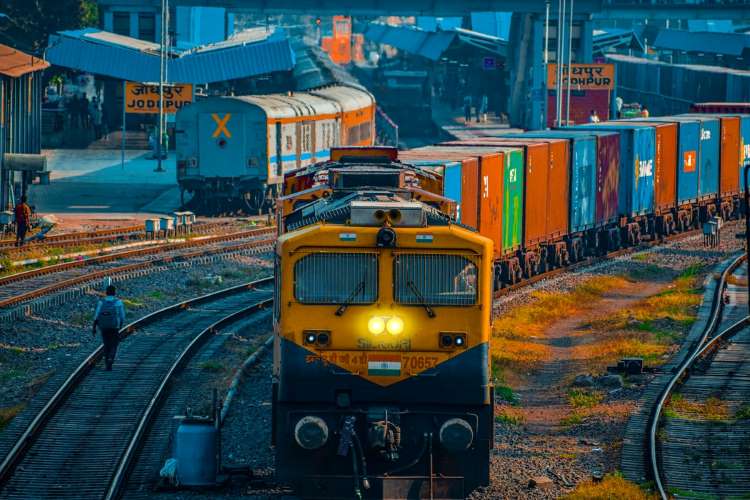
Continuing with the reforms initiative in the railways sector, the Union government has approved the allocation of 5MHz spectrum in 700MHz frequency band to Indian Railways to enhance public safety and security services at stations and in trains. In addition, the Railways also approved the Train Collision Avoidance System (TCAS) that is an indigenous automatic train protection system (ATP). It works on microprocessor-based control systems that monitors speed, direction of travel, and distance and alertness of motormen, helping to avoid train collisions. The aim is to ensure passenger safety and reduce the number of accidents.
The approval for allocation of spectrum by the government is based on the recommendations of Telecom Regulatory Authority of India (TRAI) on ‘Allotment of Spectrum to Indian Railways for Public Safety and Security Services’ dated October 25, 2019. TRAI recommended inter-alia that 4G spectrum may be allocated to Indian Railways for captive use in order to enhance public safety and security services. TRAI also stated that spectrum charges would be levied based on a formula prescribed by the department of telecommunication for royalty charges and licence fee for captive use.
READ I Hard lessons: Layers of government must work in tandem to beat Covid-19
The allocation was opposed by telecom operators in their response to the TRAI consultation paper. They claimed that 700MHz band should be used for commercial purposes as it is the backbone for 4G/5G services and should, therefore, be auctioned.
Implications of spectrum allocation to Indian Railways
Till mid-90s, Indian Railways was dependent on manual signalling, which was later replaced by GSM-based railway standard (GSMR). GSMR is a wireless network which is designed on ‘European Integrated Radio Enhanced Network’ functional requirement specification and system requirement specification. The basic features of the GSMR includes point-to-point call, voice group call, emergency call, and functional addressing. Currently, Indian Railways has 1.6 MHZ (paired) spectrum in 900 MHZ band for deployment of GSMR based network. Given that public networks have evolved from 2G (GSM) to 4G, the GSM communication system is being decommissioned. As a result, GSMR needs to be replaced by a next generation dedicated communication system.
The allocation of spectrum is a major technological advancement towards Indian Railway’s communication and signalling system that would enable it to provide long-term evolution (LTE) based mobile train radio communication on its routes. The purpose of the LTE for the Railways is to provide a secure and reliable voice, video, and data communication services for operational, safety and security applications.
READ I G7 to launch ‘green belt and road’ plan to counter China
In addition, LTE is considered a suitable wireless communication system that would cater the operational needs of high-speed rail (HSR). LTE has a simple flat architecture compared to GSM, high data rate and low latency, making it an acknowledged acceptable bearer for real-time HSR applications. The estimated investment required for the LTE is Rs 25,000 crore and should be completed in 5 years.
The allocation of 4G spectrum will help Indian Railways implement ATP system, which would inter-alia help technological intervention in preventing accidents, jumping of signals and over-speeding by trains. ATP system is capable of activating emergency brakes through a satellite-based control system in case of over-speeding of trains and relies on GPS data from satellite for updates on the exact position of the trains for its anti-collision technology.
TCAS system would allow the Railways to upgrade its communication network to high-speed radio on a real time basis. This may result in a paradigm shift for Indian Railway’s operation and maintenance, given it would improve the safety and increase the capacity of the existing infrastructure by accommodating more trains thus, reducing the freight transportation cost. The spectrum would also help Indian Railways enable ‘Internet of Things’ (IoT) (i.e., a computing system that will allow devices to communicate with the network independent of human action) based remote monitoring of the coaches, wagons, locos and live feed in the train coaches to ensure safer and faster train operations.
READ I Global minimum tax explained: Abuse of tax havens to end, big tech to come under tax net
The way forward
The allocation of spectrum indicates the positive intent of the Union government as it would enable Indian Railways to fulfil its larger goal of providing socio-economic benefits to its users by offering safe and secure rail services. In addition, it will benefit the Railways by (i) increasing the speed of trains which would amount to an increase in carrying capacity, resulting in optimal and effective usage of existing infrastructure; and (ii) reducing the operational costs through IoT based assets. However, spectrum is a natural resource and Indian Railways should ensure that it does not remain unutilised.
In order to effectively utilise the spectrum, it will require a robust operating procedure and periodic monitoring to ensure that its desired targets are met in a time bound manner. The efficiency in implementation will be the key considering that the Railways is one of the largest rail networks in the world. Lastly, educating and training railway staff to use the modernised TCAS system and LTE in itself will be time consuming and a challenging process.
(Deepto Roy is Partner and Abhijit Mukherjee, Principal Associate at Shardul Amarchand Mangaldas & Co. The views are personal.)

